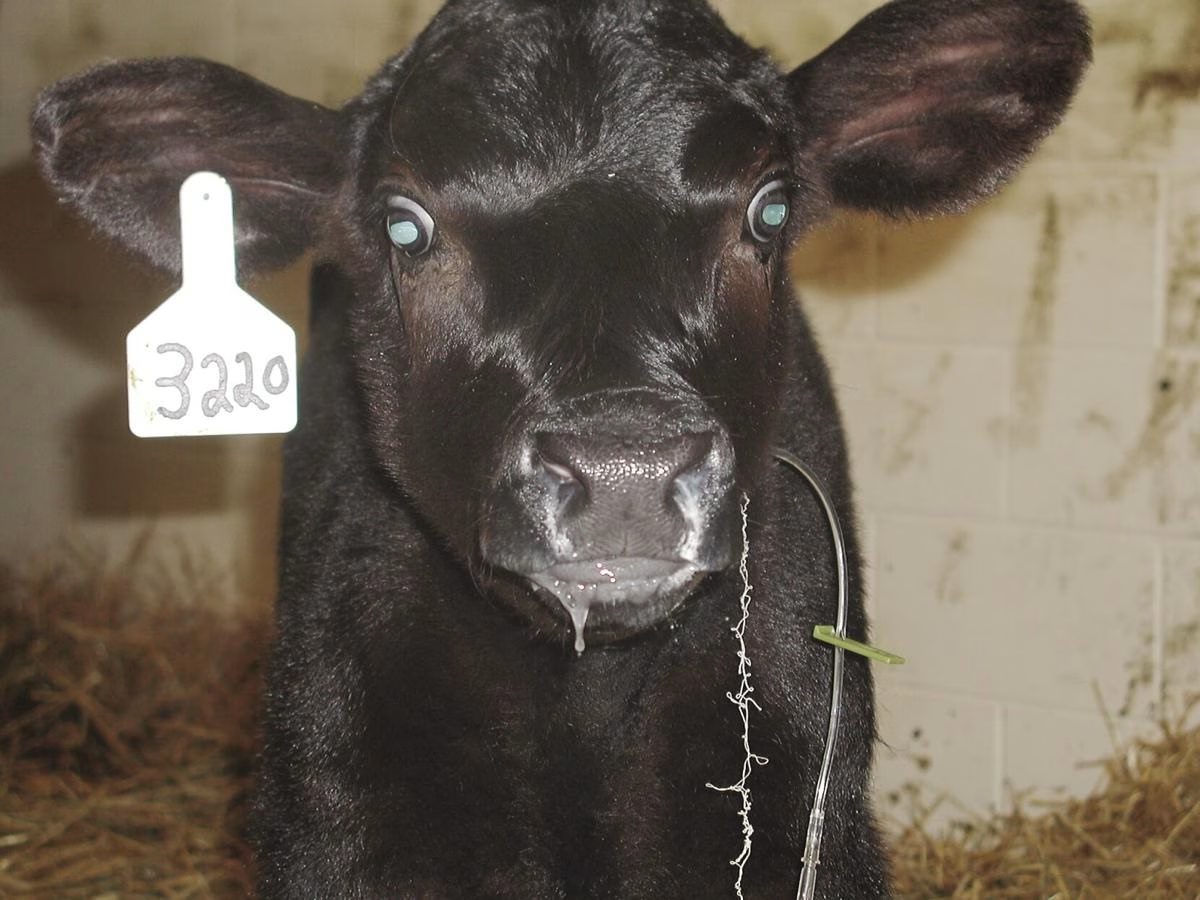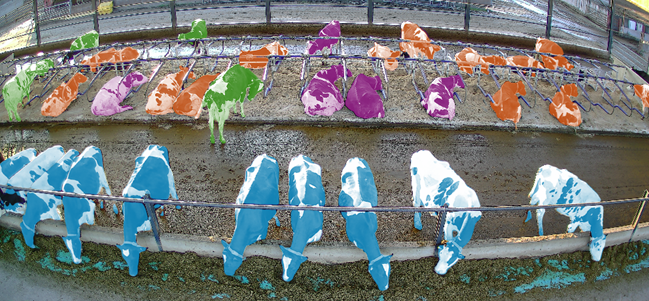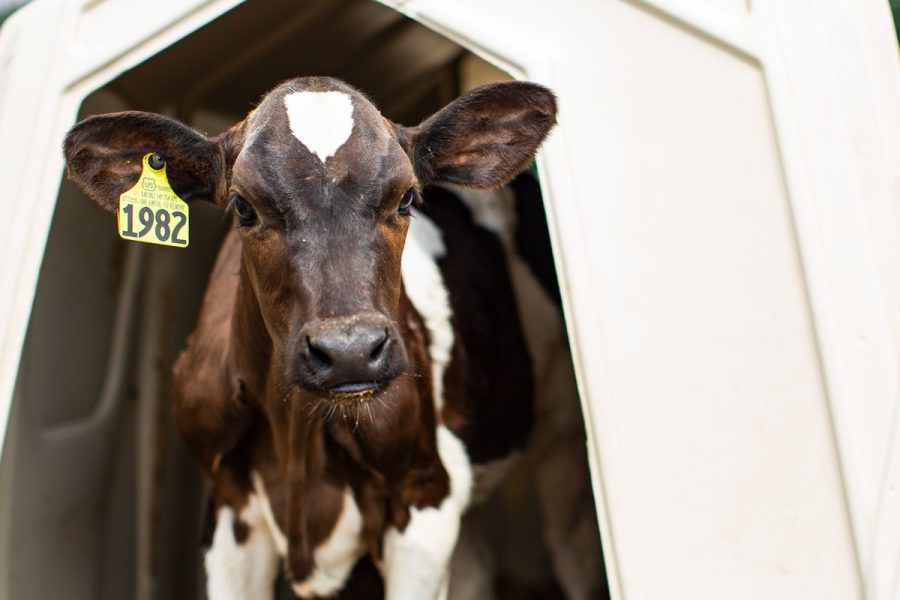Find practical tips to lower bovine respiratory disease in preweaned calves. Learn from the BRD 10K study on California dairies. Ready to boost calf health?

Bovine respiratory disease (BRD) is a difficult barrier for pre-weaned dairy calves, causing severe health problems and incurring significant economic costs on dairy farms. The entire cost of BRD, including direct and indirect charges, may vary between $150 and $300 per calf affected by the illness. Detailed research published in the Journal of Dairy Science digs into the complex elements contributing to BRD. It provides concrete measures for dairy producers to prevent this hazard. Understanding the causes of BRD, a leading cause of death in dairy heifers, is crucial for financial and ethical reasons. This study highlights the environmental, dietary, and managerial aspects influencing BRD, providing farmers with research-backed recommendations for raising healthier, more robust herds. This understanding is critical for improving calf health and the overall sustainability of dairy production.
Understanding the epidemiology of bovine respiratory disease (BRD) in pre-weaned calves is critical for dairy farmersaiming to enhance the health and productivity of their herds. The BRD 10K study provides valuable insights into the prevalence, incidence, and risk factors associated with BRD. Below is a table summarizing some of the key findings from this comprehensive study.
| Dairy | Calves Born | BRD Cases | Incidence Rate (cases per calf-month at risk) |
|---|---|---|---|
| Dairy 1 | 2500 | 575 | 0.18 |
| Dairy 2 | 3200 | 640 | 0.16 |
| Dairy 3 | 1800 | 395 | 0.17 |
| Dairy 4 | 700 | 160 | 0.19 |
| Dairy 5 | 1200 | 250 | 0.17 |
| Dairy 6 | 1545 | 355 | 0.18 |
Meticulous Dairy Selection: Ensuring Robust and Reliable Data
The selection of dairies for this research was crucial, emphasizing management techniques, location, size, and willingness to participate. Six farms in California’s Central Valley were selected, with milking cow populations ranging from 700 to 3,200. These dairies offered a wide range of data from various sizes of activities. The dedication of each dairy to research procedures guaranteed that data was collected consistently and reliably.
Over a year, 11,945 calves were followed from birth to weaning, allowing us to capture seasonal fluctuations in BRD incidence. Treatment records and surveys by qualified people were critical in monitoring BRD cases and identifying related management practices. Seasonal visits enabled extensive data collection, emphasizing the seasonal influence on BRD incidence. This thorough method provided helpful information for enhancing calf health and reducing illness risks.
Understanding the True Burden: Prevalence and Incidence of BRD in Preweaned Calves
| Key Finding | Value | 95% Confidence Interval (CI) |
|---|---|---|
| Overall BRD Study Period Prevalence | 22.8% | N/A |
| Mean BRD Incidence Density Rate (per calf-month at risk) | 0.17 BRD cases | 0.16–1.74 |
| Summer Season Hazard Ratio | 1.15 | 1.01 to 1.32 |
| Spring Season Hazard Ratio | 1.26 | 1.11 to 1.44 |
| Risk Reduction from Feeding Milk Replacer | Significant | See study |
| Risk Increase from Housing in Wooden Hutches with Metal Roofs | Significant | See study |
The research discovered that 22.8% of pre-weaned calves had BRD, significantly affecting herds. This number is critical for determining the disease’s prevalence. The average BRD incidence density rate was 0.17 cases per calf-month at risk, with a 95% confidence range ranging from 0.16 to 1.74. These findings illustrate the need for good management strategies to control BRD in dairy calves. Given that roughly a quarter of the calves in the research were impacted, BRD presents a severe clinical and economic problem to dairy producers. Implementing effective health monitoring and intervention measures may lower the incidence of BRD and enhance herd health. The variety in BRD cases, which is impacted by seasons, weather, and farm operations, highlights the significance of tailoring remedies to each dairy farm. Understanding these subtleties may result in more effective illness management techniques.
Strategic Measures for Reducing BRD in Preweaned Calves: Best Practices for Dairy Farmers
Effective management practices are crucial in reducing BRD in pre-weaned dairy calves. This study identified several key strategies that are beneficial across various dairies.
- Firstly, feeding protocols are vital. Calves-fed waste or saleable milk had a much lower BRD risk than those given milk replacers. Additionally, providing more than 3.8 liters of milk daily to calves under 21 days old promoted a healthier start.
- Bedding management also proved significant. Frequently changing the bedding in maternity pens reduced BRD risk. This simple practice minimizes calves’ exposure to harmful pathogens in soiled bedding, fostering a cleaner environment.
- Vaccination protocols were crucial, too. Administering modified live or killed BRD vaccines to dams before calving significantly lowered the likelihood of their calves developing BRD. This proactive approach ensures calves receive antibodies through colostrum shortly after birth, offering early protection.
By implementing these targeted feeding strategies, diligent bedding maintenance, and strategic vaccination schedules, dairies can effectively reduce BRD and promote the overall health of their pre-weaned calves. This combination of practices offers a comprehensive approach to managing factors contributing to BRD, safeguarding the productivity and longevity of dairy herds.
Identifying and Mitigating Key Risk Factors Influencing BRD Incidence in Preweaned Calves
Several main risk factors increase the prevalence of bovine respiratory disease (BRD) in pre-weaned calves, which dairy producers should be aware of. Housing conditions are critical; calves in wooden hutches with metal roofs are more vulnerable than those in all-wood hutches, emphasizing the necessity for optimal shelter construction.
Additionally, twin births raise the chance of BRD. Twin calves are more likely to experience stress and have a lower immune system. These calves need further care and monitoring.
Environmental dust levels can have a significant impact. Dust that occurs “regularly” in the calf-raising region has been linked to an increased risk of BRD. Maintaining a clean, dust-free atmosphere is critical.
Seasonal differences can influence BRD occurrence. Summer and spring provide more significant hazards than winter, implying that warmer weather increases calves’ susceptibility to respiratory infections. Dairy producers should use season-specific measures to control and minimize BRD risk during peak incidence times.
Seasonal Patterns and Their Influence on BRD Incidence in Preweaned Calves
| Season | BRD Incidence Rate (Hazard Ratio) | 95% Confidence Interval (CI) |
|---|---|---|
| Summer | 1.15 | 1.01 to 1.32 |
| Spring | 1.26 | 1.11 to 1.44 |
| Winter | 1.00 | Reference |
The study’s results on seasonal effect show significant connections between time of year and BRD incidence in pre-weaned calves. Spring and summer provide a higher risk than winter, with hazard ratios of 1.26 and 1.15, respectively.
Spring’s shifting temperatures and increasing humidity might produce settings favorable to respiratory infections, reducing calf immunity. Furthermore, increased calving during spring results in more immature, fragile calves, increasing the danger of BRD epidemics.
Summer brings increased temperatures and the possibility of dust, which may irritate the respiratory system and make calves more vulnerable to illness. Heat stress during this season may further weaken calves, making it difficult for them to fight respiratory infections.
In comparison, winter often provides a more stable atmosphere. The colder temperatures may not have the same negative impact as those in spring and summer. Recognizing these trends enables tailored therapy depending on seasonal obstacles, lowering BRD risks throughout the year.
Proactive Strategies for Dairy Farmers to Combat BRD in Preweaned Calves
Bovine respiratory disease (BRD) is a significant threat to pre-weaned calves. Research provides critical steps for dairy farmers to tackle this issue:
- Housing Improvements: To reduce BRD risk, use all-wood hutches instead of wooden cabinets with metal roofs. Ensure proper ventilation to minimize dust, linked to a higher incidence of BRD.
- Feeding Practices: Feed calves more than 3.8 liters of milk daily, especially those under 21 days old, to lower BRD risk. Milk replacers should be preferred over waste or saleable milk for better calf health.
- Maternity Pen Management: Frequently change maternity pen bedding to create clean and dry conditions, reducing exposure to pathogens and lowering BRD transmission.
- Vaccination Protocols: Administer modified live or killed BRD vaccines to dams before calving to boost calf immunity via colostrum, protecting against respiratory infections.
- Addressing Twin Births: Extra care is crucial for twins, who are at higher risk for BRD. Ensure they get sufficient nutrition and monitor them closely for respiratory issues.
- Seasonal Considerations: BRD risk is higher in spring and summer. To prevent infections, enhance feeding protocols, and increase monitoring during these seasons.
By adopting these strategies, dairy farmers can significantly reduce BRD risk, ensuring healthier calves.
The Bottom Line
Our study of BRD in pre-weaned dairy calves provides essential insights for minimizing its prevalence. By examining management techniques and risk variables, we offer a clear path for California dairy producers to improve calf health and production. Key results from the BRD 10K trial include:
- The benefits of utilizing milk replacers.
- Keeping maternity pens clean.
- Administering dam vaccines on time.
Improving housing by eliminating wooden hutches with metal roofs and minimizing dust is critical. Seasonal patterns reveal that BRD instances are more significant in the spring and summer, emphasizing the need for preventive care.
These approaches have the potential to drastically decrease the incidence of BRD while also enhancing calf and herd health. This not only improves animal welfare but also the economic health of dairies. Recognizing and treating these risk factors is critical. The dairy sector must promote these best practices to ensure a healthier and more resilient future for our calves and farms.
Key Takeaways:
- High Prevalence and Incidence: The study found an overall BRD prevalence of 22.8% across the dairies, with a mean BRD incidence rate of 0.17 cases per calf-month.
- Effective Management Practices: Key strategies to reduce BRD risk include feeding practices, proper maternity pen management, and timely vaccination of dams.
- Environmental Risk Factors: Housing conditions and environmental factors, such as dust and temperature, were identified as significant contributors to BRD risk.
- Seasonal Influences: The study underscores the increased risk during spring and summer, necessitating heightened vigilance during these seasons.
Summary:
Bovine respiratory disease (BRD) remains a significant issue for dairy producers, especially in pre-weaned calves. This extensive research, done across six varied dairies in California’s Central Valley, aimed to uncover the epidemiology of BRD and discover appropriate management techniques to reduce its risk. The research gives practical insights into minimizing BRD prevalence and incidence by meticulously following over 12,000 calves and conducting extensive assessments of calf care techniques. The results indicated a 22.8% prevalence of BRD among the examined calves, with various management techniques as significant predictors of disease risk. Essential strategies that lowered BRD risk included feeding only discarded or saleable milk or using a milk replacer. Calves under 21 days old are fed more than 3.8 liters of milk daily. The maternity pen bedding is often changed. They are giving modified live or dead BRD vaccinations to dams before calving. Housing calves in inadequate structures and preserving a dust-free environment are critical in avoiding BRD,” said one researcher, emphasizing the need for careful calf housing arrangements.
Furthermore, the research found a seasonal effect on BRD risk, with spring and summer showing more excellent rates than winter. This highlights the need for season-specific techniques in BRD control. Dairy producers today have a robust set of data-driven approaches to tackle BRD, resulting in healthier herds and more sustainable dairy businesses.













